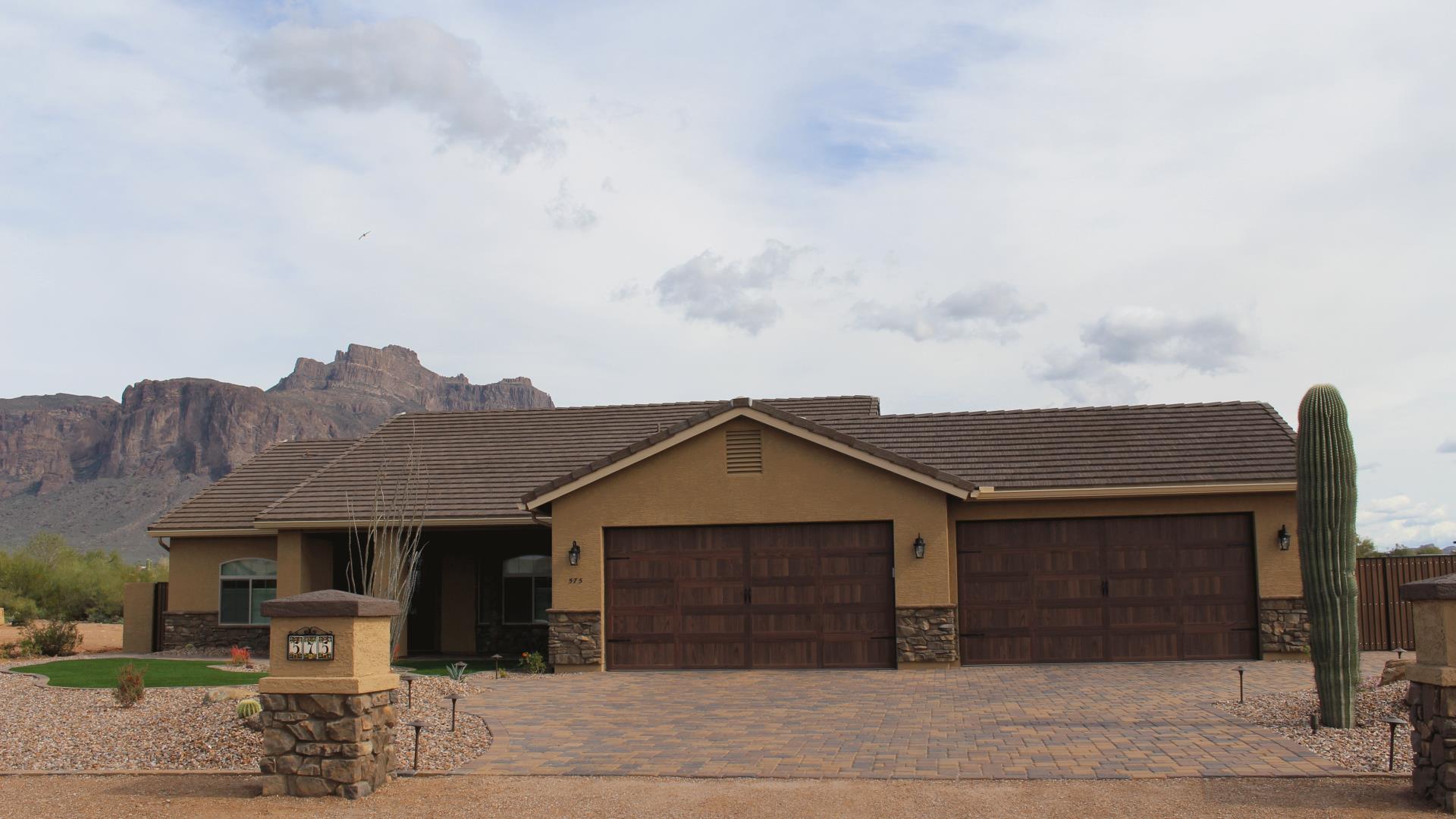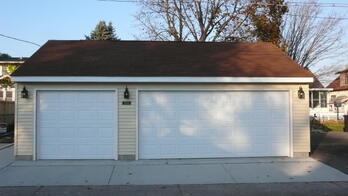
There are many options for garage door openers if you have made the decision to replace your existing one. There are two options: an overhead or wall-mounted garage door opener. Each type has its own merits and disadvantages. But, both of these options will help you enter and exit your home with ease.
Wall-mounted garage door openers are becoming more popular for residential applications. In addition to their convenience, they are quieter and safer. They are also simpler to install than overhead models and require less upkeep. Wall-mounted openers can be more costly and are less reliable than overhead systems. While they can add more space to the ceiling, they are not suitable for homes with high ceilings.
A wall-mounted garage doors opener is an option for smaller or more isolated garages. These openers are great for garages with low ceilings and sloped ceilings. They are placed on the side and can increase the size of your garage.

These types of garage doors openers have one major drawback: they are not as powerful as the overhead ones. They can also be heavy and noisy. Additionally, they need an electrical outlet nearby the door. This can be difficult to use. On the other side, they are much easier to clean and have a wider range of access.
Wall-mounted openers also have the advantage of being much more attractive that overhead systems. Wall-mounted openers can be found in many different styles, despite their low price. Many have built-in Wi-Fi, while others have smartphone control. Some include battery backup, which allows you to keep your garage doors closed even if the power goes off.
Wall-mounted openers are easier to install than overhead ones. Wall-mounted openers can be mounted on the wall to mount to the door sideways, eliminating the need for a rail track. They are also less intrusive than overhead systems.
Although wall-mounted openers aren't as powerful as overhead systems, they are still more than adequate to open any kind of garage door. Genie's Wall Mount Smart Garage Door Opener can lift doors upto 850 pounds. It also includes a Safe T Pulse to protect against accidental drops.

Wall-mounted openers have other advantages, including the fact that they are less susceptible to being burglarized. These openers are safer than overhead garage door openers because they don't have belts and chains that can be removed or altered. They are also easy to clean, making them an attractive option for older homes who might not have the funds to do a complete overhaul.
There are many wall-mounted openers available. You should take into account your budget, your garage size and your family's needs when selecting the right one. Genie and Chamberlain are the top-selling manufacturers of these systems.
FAQ
How much would it be to renovate a house vs. what it would cost you to build one from scratch?
A home gutting involves the removal of all interior items, including walls, floors ceilings, plumbing and electrical wiring, fixtures, appliances, and fixtures. Gutting is done when you want to make some modifications before moving in. Because of the many items involved in gutting a house, it is usually very costly. Depending on your job, the average cost to gut a home can run from $10,000 to $20,000.
The process of building a home involves the construction of a house from one frame to another. Next, the builder adds walls, flooring and roofing. This is often done after purchasing lots of land. Building a home is normally much less expensive than gutting, costing around $15,000-$30,000.
It all depends on what you plan to do with your space. If you want to gut a home, you'll probably need to spend more because you'll be starting over. However, if you want to build a home, you won't have to worry about ripping everything apart and redoing everything. You can build it the way you want it instead of waiting for someone else to come in and tear everything up.
Why remodel my home when I can buy a brand new house?
It's true that houses get cheaper yearly, but you're still paying for the same square footage. You may get more bang for your buck but you still have to pay for extra square footage.
It's cheaper to maintain a house without much maintenance.
Remodeling can save you thousands over buying a new house.
Remodeling your home will allow you to create a space that is unique and suits your life. Your home can be made more comfortable for your family.
What are the biggest expenses in remodeling a kitchen?
A few key costs should be considered when planning a kitchen remodeling project. These include demolition, design fees, permits, materials, contractors, etc. But when we look at these costs individually, they seem pretty small. These costs quickly multiply when they are added up.
The most expensive cost is probably the demolition. This includes removing any cabinets, appliances, countertops or flooring. You will then need to remove the insulation and drywall. You must then replace these items with new ones.
Next, hire an architect who will draw plans for the space. To ensure that the project meets all building codes, permits must be obtained. After that, you have to find someone to do the actual construction.
Finally, after the job is completed, you must pay the contractor. Depending on the size of the job, you could spend between $20,000 to $50,000. Before hiring a contractor, it is vital to get estimates from multiple people.
These costs can be avoided if you plan. You may be able to negotiate better deals on materials or even skip some of the work. It is possible to save money and time by knowing what to do.
Many people will attempt to install their cabinets themselves. People believe that this will save them money since they won't have to hire professionals for installation. It is often more expensive to have professional installation services. A job can typically be done in half the time than it would take for you by professionals.
Unfinished materials can also be a way to save money. It is important to wait until all pieces have been assembled before buying pre-finished materials, such as cabinets. You can begin using unfinished materials right away if they are purchased. You can always make a change if things don't go as you planned.
Sometimes it is not worth the hassle. Remember: the best way to save money on any home improvement project is to plan.
What order should you renovate your house?
First, the roof. The plumbing follows. Third, the electrical wiring. Fourth, walls. Fifth, the floors. Sixth, the Windows. Seventh are the doors. Eighth is the kitchen. Ninth, the bathroom. Tenth: The garage.
After all the above, you are now ready for the attic.
Hire someone to help you if you don't have the skills necessary to renovate your home. Renovating your own house takes time, effort, and patience. It is also expensive. It will take time and money.
Renovations aren’t always inexpensive, but they can make your life easier and save you money in the long term. You will enjoy a more peaceful life if you have a beautiful house.
What is the cost of completely renovating a kitchen?
You might wonder how much it would be to remodel your home if you have been considering the idea.
Kitchen remodels typically cost between $10,000 to $15,000. There are many ways to save money and improve the overall feel of your kitchen.
Preparing ahead can help you cut down on your costs. This includes choosing a style and color scheme that suits your lifestyle and finances.
Another way to cut costs is to make sure that you hire an experienced contractor. An experienced tradesman is familiar with all aspects of construction and will not waste time trying to figure out the best way to accomplish a task.
It's best to think about whether you want your current appliances to be replaced or kept. A kitchen remodel can add thousands to the cost by replacing appliances.
It is possible to choose to buy used appliances, rather than buying new ones. You will save money by purchasing used appliances.
Finally, you can save money by shopping around for materials and fixtures. Many stores offer discounts for special occasions like Cyber Monday or Black Friday.
What should I do to my existing cabinets?
It depends on whether your goal is to sell or rent out your house. You will need to take down and refinish your cabinets if you are selling. This gives buyers the impression that they're brand new and helps them envision their kitchens after moving in.
But if your goal is to rent your house you will need to remove the cabinets. Renters often complain about dealing with dirty dishes and greasy fingerprints left behind by previous tenants.
To make the cabinets look better, you can paint them. Use a high-quality primer. Low-quality paints can become brittle over time.
Statistics
- About 33 percent of people report renovating their primary bedroom to increase livability and overall function. (rocketmortgage.com)
- Attic or basement 10 – 15% (rocketmortgage.com)
- 5%Roof2 – 4%Standard Bedroom1 – 3% (rocketmortgage.com)
- 55%Universal average cost: $38,813Additional home value: $22,475Return on investment: 58%Mid-range average cost: $24,424Additional home value: $14,671Return on investment: (rocketmortgage.com)
- bathroom5%Siding3 – 5%Windows3 – 4%Patio or backyard2 – (rocketmortgage.com)
External Links
How To
How to Install Porch Flooring
Installing porch flooring is easy, but it does require some planning and preparation. The easiest way to install porch flooring is by laying a concrete slab before installing the porch flooring. You can also lay a plywood deckboard if you don't have access to concrete slabs. This allows porch flooring to be installed without the need for a concrete slab.
Before installing porch flooring, you must secure the plywood as the subfloor. First measure the porch's width. Then cut two strips from wood that are equal in width. These strips should be placed along both sides of the porch. Next, nail them into place and attach them to the walls.
After securing the subfloor, you must prepare the area where you plan to put the porch flooring. This typically involves cutting the top layer of floorboards to the desired size. Then, you must apply a finish to the porch flooring. A common finish for porch flooring is polyurethane. It is possible to stain porch flooring. Staining is easier than applying a clear coat because you only need to sand the stained areas after applying the final coat of paint.
After completing these tasks, it's time to install your porch flooring. First, measure and mark the location of your porch flooring. Next, cut the porch flooring to size. Finally, put the porch flooring in its place and nail it.
If you wish to improve the stability of your porch flooring, you can add porch stairs. Porch stairs are often made from hardwood. Some people prefer to put their porch stairs up before they install their porch flooring.
Now it's time to finish your porch flooring project. You first have to take out the old porch flooring and put in a new one. Next, clean up all debris. Be sure to remove all dirt and dust from your home.